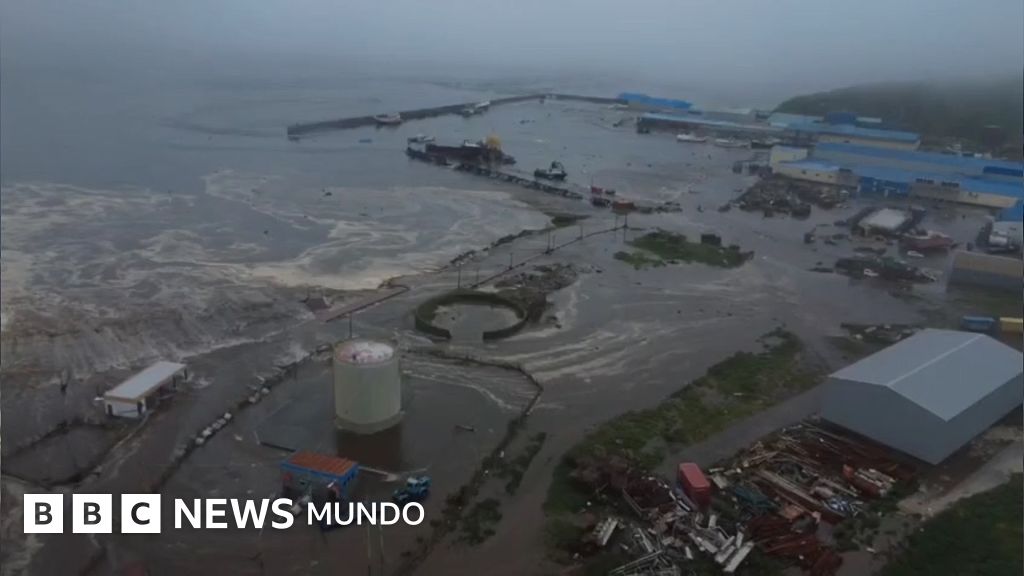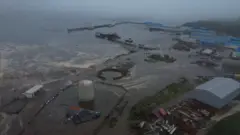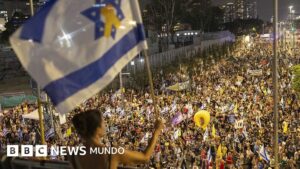

Image source, Getty Images
-
- Author, Writing
- Author's title, The Conversation*
On July 30, one of the largest registered earthquakes shook the front of the Kamchatka Peninsula, at the East of Russia. In a matter of minutes, Tsunami alerts were issued in Russia, much of Asia and through the Pacific in Hawaii, New Zealand and California.
But this was not the first time that a great tsunami hit Kamchatka. In 1952, an even more powerful earthquake affected the same geological fault, but was kept secret for the rest of the world.
Kamchatka is no stranger to seismic activity, with a great earthquake that happened as recently as in 2020 (the most powerful room worldwide that year). However, only larger earthquakes can generate destructive tsunamis and cause alerts throughout the Pacific, as happened on Wednesday.
In a plate limit, where two pieces of the earth's crust are located, these large earthquakes usually occur in time scales consisting known as “seismic cycles.” In some areas, these cycles are long: on the limit of Cascadia, against the Pacific coast of North America, for example, the last great earthquake of tsunamis was in 1700.
However, the plates move much faster close to Kamchatka (about 8 centimeters per year), and the cycle is much shorter. Large tsunamis were generated by earthquakes in 1737, 1841, 1952 … and now 2025 is a continuation of that cycle.

Image source, Reuters
Shortly after noon on November 5, 1952, tsunami waves up to 2.4 meters hit Hawaii. This was one of the first real trials for the Pacific Tsunamis Alert Center, which had recently been established in the islands in response to a Tsunami occurred in 1946 after an earthquake in Alaska.
That same day, seismologists around the world detected signs of an earthquake located in the northwest of the Pacific, near Kamchatka. When the wave arrived in Hawaii, the scientists there quickly used the exact time of the impact and the known speed of the tsunamis (in deep water, comparable to that of a reaction plane) to deduce that it had been generated by that huge earthquake in the Northwestern Pacific. But from Kamchatka there was only silence.
There were no reports of earthquakes or tsunamis in the Soviet press. Not a single word was published in the state newspaper Pravda, which instead focused on preparations for the anniversary of the October Revolution, which would be held two days later.
Days and months passed without any recognition of the Tsunami or the earthquake. Even an interview with a Russian volcanologist, Alexander Evgenievich Svyatlovsky, was classified as “state secret”, despite the fact that he only explained how the tsunami had originated.
This type of secrecy was common in the apogee of the cold war, with Chernobil and other disasters frequently minimized or silenced by the Soviet authorities. Only after the opening of the state archives in the early 2000s, the whole story could be known.
The devastation in Severo-Kurilsk
The isolated fishing city of Severo-Kurilsk is located on an island just south of the Kamchatka Peninsula. According to state archives, in 1952 about 6,000 people lived there, distributed along the coast.
On the morning of November 5, the inhabitants were awakened by a large earthquake, the strongest they had ever felt. About 45 minutes later, a wave arrived, slowing down and rising when approaching the shore. Soldiers stationed as Vigías managed to alert the population of danger, and many fled towards higher areas.
But tsunamis are wave trains composed of a series of ridges and depressions. They behave similarly to the waves that are experienced on the beach, except that these extend by thousands of meters in the ocean and do not reach the coast every few seconds, but with intervals of tens of minutes between one and the other.
Minutes after some residents had returned to their homes, a second wave, even bigger, hit. It rose about 12 meters high – tan high as a three -story building – and hit the town from the rear. A third wave arrived shortly after, sweeping much of what was still standing.
In total, Tsunami caused 2,336 deaths from a population of 6,000 people. The survivors never shared the details for fear of reprisals, and the story remained as a state secret.
Today, Severo-Kurilsk is 20 meters above sea level, rebuilt and reinforced. Videos of the 2025 tsunami show floods in the port, but no fatal victims have been reported, a testimony of modern alert systems and urban planning.
However, a problem persists: the relocation of the people has placed it in the trajectory of dangerous mud flows from the nearby Ebeko volcano (only 7 km away). For Severo-Kurilsk, tsunamis are just one of the many threats he faces in this Pacific corner.
*Patrick David Sharrocks, is a doctorate in geological risks by tsunamis from the University of Leeds (United Kingdom).
This article was published in The Conversation and reproduced here under the Creative Commons license. You can read the original English version here.

Subscribe here To our new newsletter to receive every Friday a selection of our best content of the week.
And remember that you can receive notifications in our app. Download the latest version and act.






